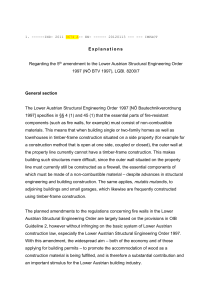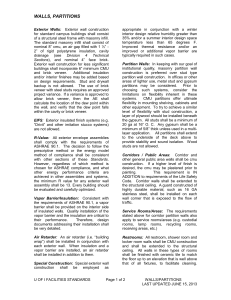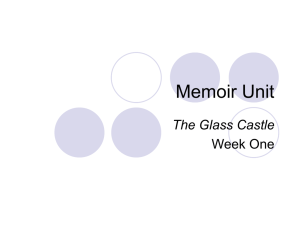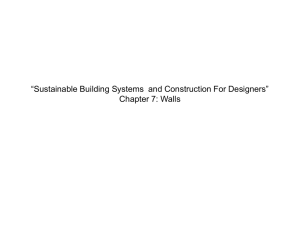Public Attitudes to Peace Walls
advertisement
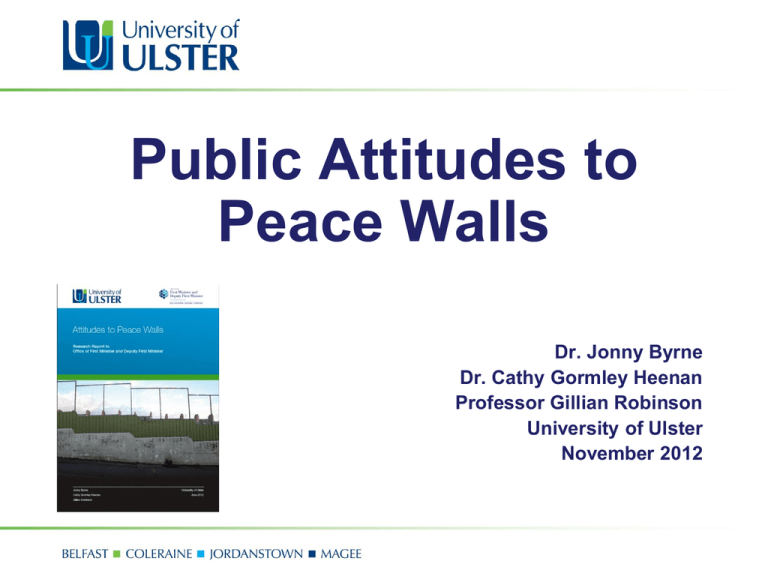
Public Attitudes to Peace Walls Dr. Jonny Byrne Dr. Cathy Gormley Heenan Professor Gillian Robinson University of Ulster November 2012 Overview Rationale and research methodology Central findings Community feedback Policy implications Stakeholder feedback Terminology For the purposes of the research we use the term Peace Walls as this is the term used in every day conversation. However in the actual surveys and cover letters we used the term Peace Line to ensure that respondents understood what we meant…we said: ‘We are using the term Peace Line to cover all kinds of interface barriers that keep communities apart including walls, gates and security barriers’. Methods Two postal surveys – general population; peace walls residents Incentive of £10 voucher or donation to charity. Two separate but similar questionnaires: Proximity to a Peace Perceptions of why Peace Lines were established; Perceptions of the impact of Peace Lines; Awareness of policy initiatives; Roles and Responsibilities in relation to Peace Lines; Views on methods of transforming and/or removing Peace Lines. Response Rate Location Response (n) % North Belfast (276) 26% West Belfast (305) 26% East Belfast (147) 30% Derry~Londonderry (110) 23% Peace Lines areas TOTAL (840) 26% Rest of Northern Ireland (611) 32% What do the results tell us? 1. Knowledge and understanding of peace walls 2. Roles and responsibilities 3. Awareness of policies and initiatives 4. Future of peace walls 5. Condition required for removal/transformation 6. Imagining the future Central findings The impact of peace walls on local residents: 76% make people feel safer 69% still necessary because of potential for violence 67% sends out bad image of Northern Ireland 53% see them as a tourist attraction The impact of peace walls on general population: 81% send out bad image of Northern Ireland 38% see them as a tourist attraction Full results In your pack you will find the final report. Full details on the methodology is available in the technical report available at: www.ark.ac.uk/peacewalls2012/ where you can also access lay friendly tables and the datasets. Understanding of the present 31% residents believe that the community has overall responsibility for peace walls 4% DoJ have responsibility 66% know hardly anything/nothing about initiatives 29% local politicians keep people informed 28% local community reps keep people informed 63% interested/very interested in finding out more Thinking about the future • 14% like walls to come down now • 44% like them to come down in the future * 58% - positive expression • 22% like things the way they are now • 9% make subtle changes to the peace walls Conditions (Table 18) Community safety and security 56% CCTV (P-65% C-52%) 46% more policing (P-57% C-42%) Engagement 41% local community leaders working together (C-45% P-32%) 38% opportunities bring people together (C40% P-30%) 34% local politicians working together (C-35% P-32%) Imagining 38% envisage a time when there are no walls 45% cannot imagine a time with no walls If removed… 37% violence during particular events/dates 58% fairly/very worried about policing the space Why do these attitudes matter ? Results indicate that respondents still frame the issue in a multiplicity of ways: Remember not simply physical security… Identity Sense of community Culture Peace walls Findings suggest government strategy/ policy needs… Sharing information Participation Engagement Joined-up Security Imagination Policy Responsibility based upon thematic analysis Community feedback Tremendous positivity from the research Absence of violence Framing the conversation Policing and community safety Language & imagination – transformation, regeneration, removal Black, white and shades of gray Multitude of interventions, targets, deadlines What does this mean for government ? 64% of respondents believe that peace walls should be a priority for government Priority 4 of the PfG gives recognition that walls should be a priority Is that enough? How can the different government departments be supported in developing bespoke strategies and policies which complement the overall policy priority?








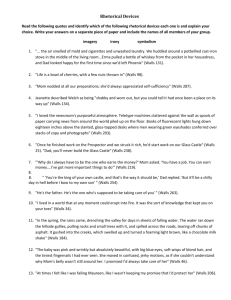

![Kaikoura Human Modification[1]](http://s2.studylib.net/store/data/005232493_1-613091dcc30a5e58ce2aac6bd3fb75dd-300x300.png)




